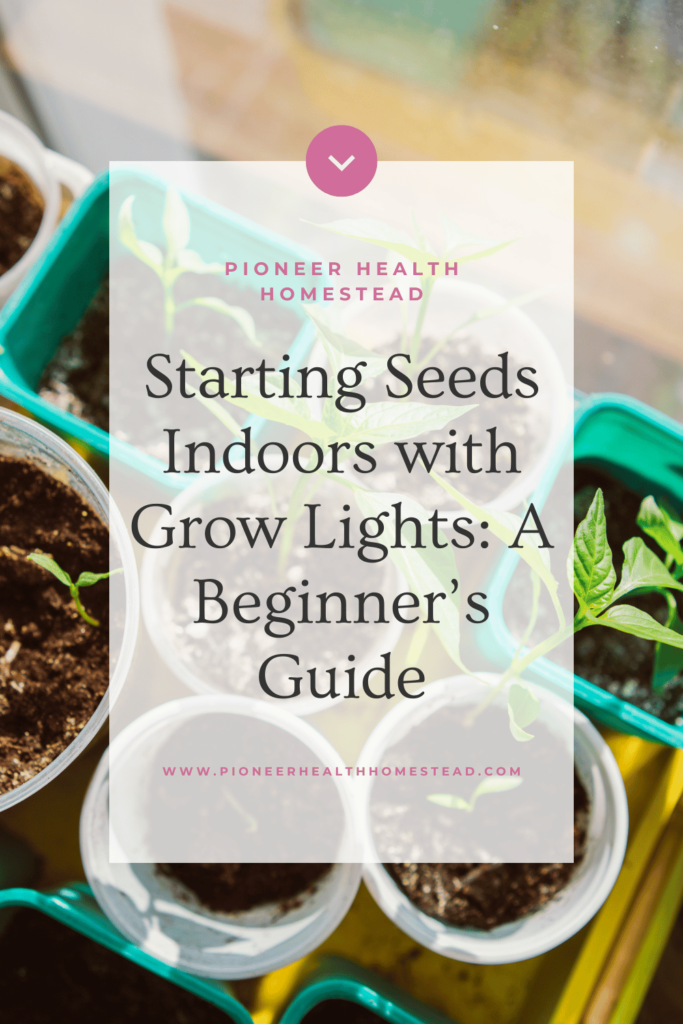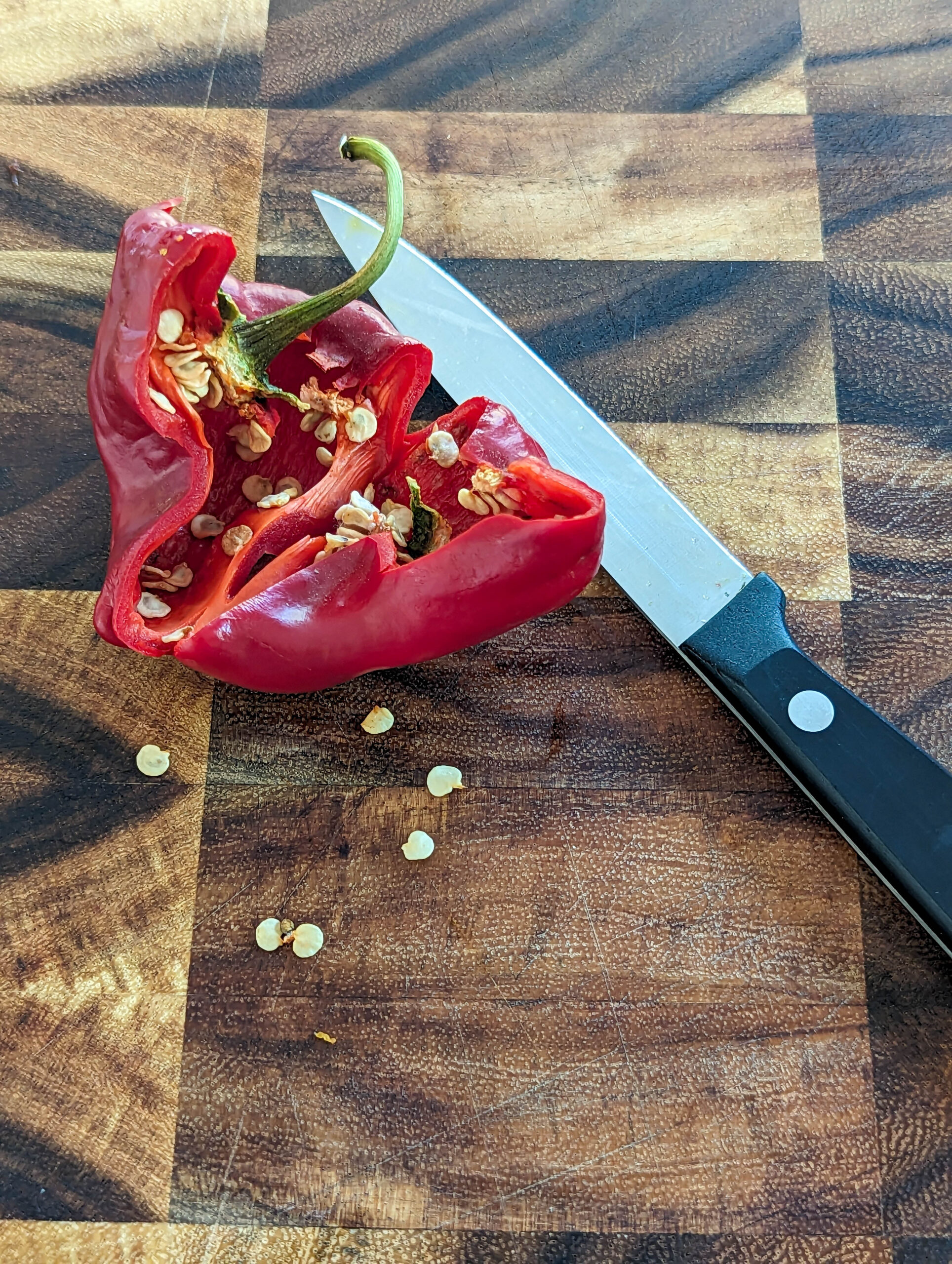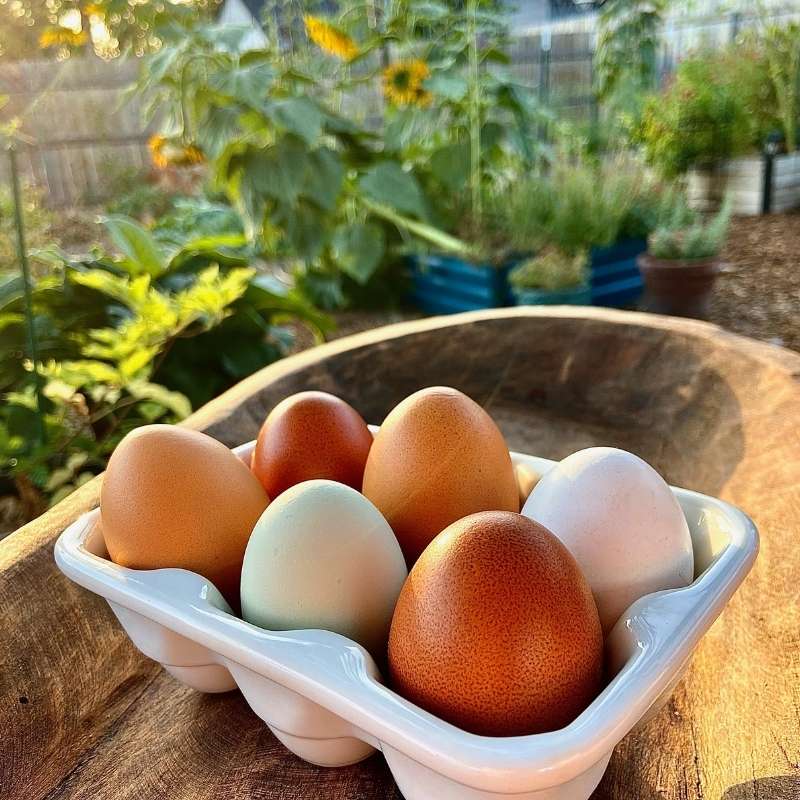How to Make Peppers Grow Faster: Guide and Easy Tips
How to make peppers grow faster is a common question among home gardeners seeking to maximize their growing season. Whether you’re nurturing sweet peppers, green peppers, or hot pepper plants, creating ideal conditions is essential for pepper success. The best way to achieve healthy pepper plants and early fruits is by focusing on proper care, nutrient-rich soil, and warm weather.
In this guide, I’ll share proven tips and techniques on how to make peppers grow faster. Along with how to help you grow larger plants with strong root systems. From starting with sweet pepper seeds in late winter to transplanting young plants into well-drained soil under full sun, you’ll learn the secrets to a successful pepper harvest. By the end, you’ll have the tools and knowledge to enjoy the best pepper harvest in your home garden.
Save for Later!
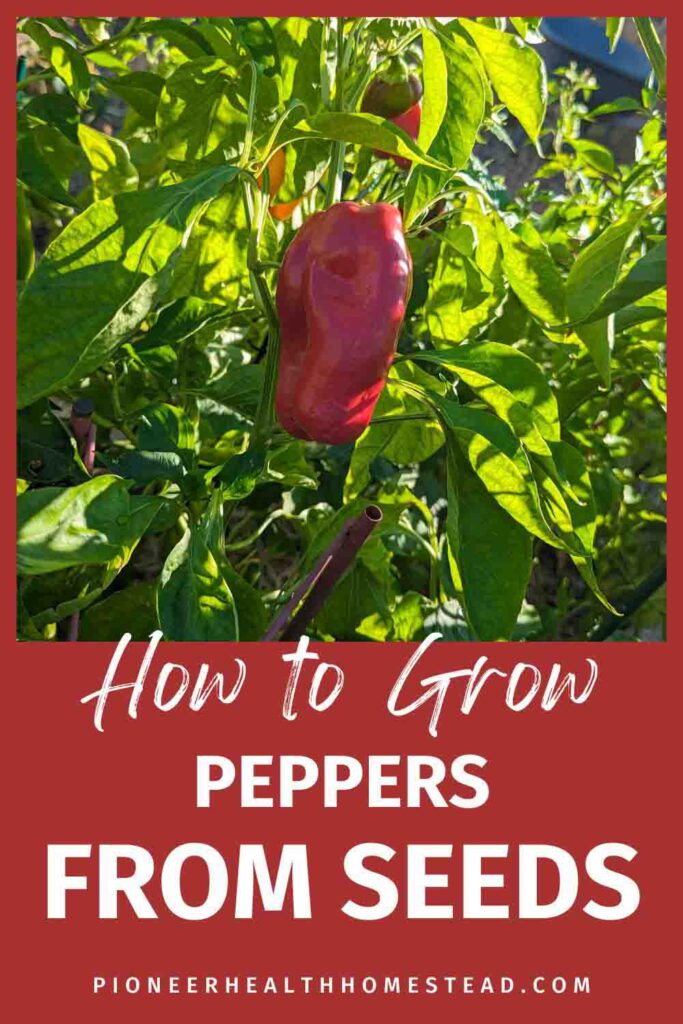
Preparing for Success
Knowing how to make peppers grow faster starts with proper preparation and selecting the right pepper varieties. The fastest-growing peppers, like sweet bell peppers, orange jalapeños, and other spicy peppers, thrive when chosen for their growing conditions. Matching pepper varieties to your home garden ensures healthy pepper plants and a productive growing season.
Selecting the Right Varieties
Choosing the right pepper varieties is key to learning how to make peppers grow faster and enjoy a successful harvest season. Each variety has its unique flavor, growth habits, and suitability for different growing conditions. Here’s a closer look at some popular options:
Sweet Bell Peppers
Sweet bell peppers are a favorite for their mild flavor and versatility in recipes. They thrive in warm weather and full sun, producing large, sturdy plants that bear vibrant fruits in various colors like green, red, yellow, and orange.
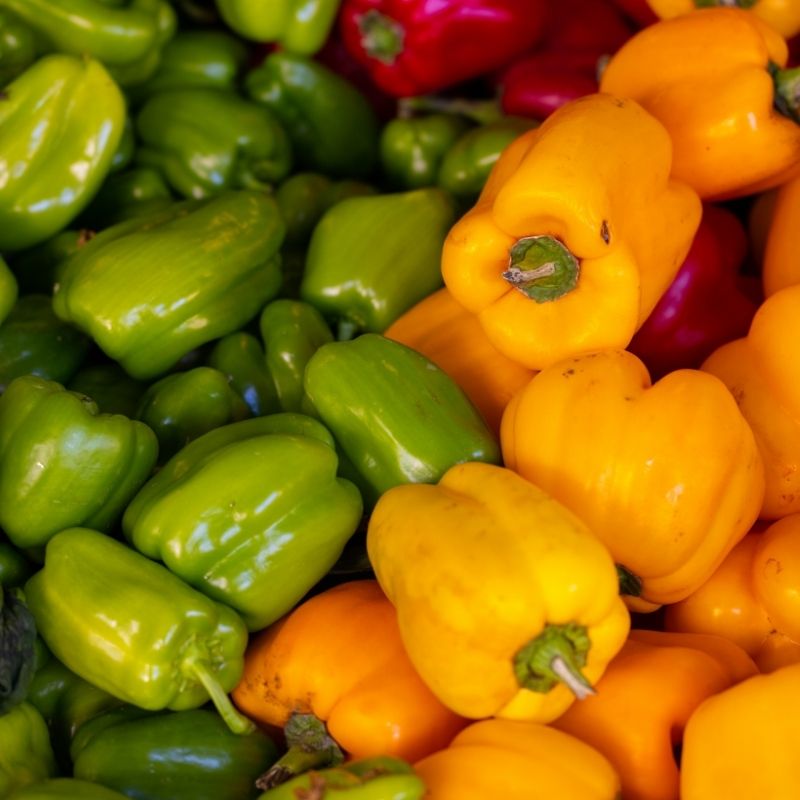
Jalapeños
Jalapeños are among the fastest-growing peppers and ideal for spicy pepper lovers. These small fruits pack a medium heat level, making them perfect for salsas, stuffed dishes, or pickling. They grow well in warm soil with proper care and thrive in nutrient-rich soil.
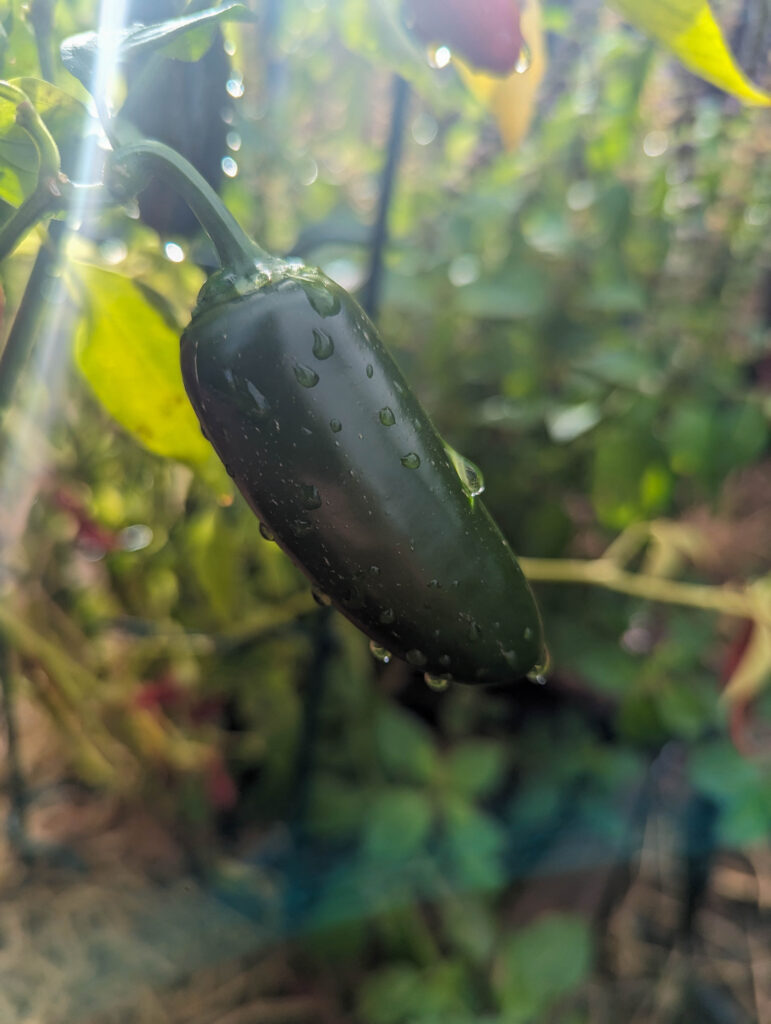
Serrano Peppers
Serrano peppers are similar to jalapeños but offer a spicier flavor. These spicy peppers grow quickly and produce small, thin fruits perfect for hot sauces and fresh dishes. Serrano plants require plenty of direct sunlight and well-drained soil for optimal growth.
Habanero Peppers
Habanero peppers are known for their intense heat and fruity flavor. These small fruits require warm weather and consistent soil moisture. Proper nutrition and care help them thrive, even in challenging growing conditions.
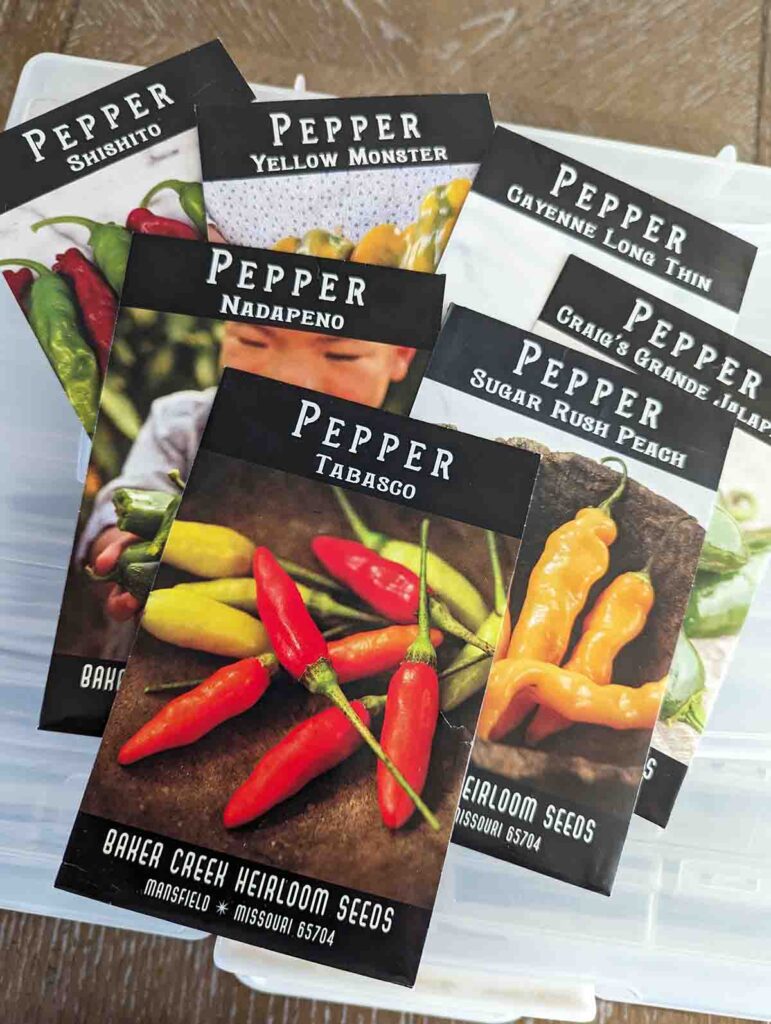
Banana Peppers
Banana peppers are mild and sweet, making them a great choice for those who prefer less heat. These peppers are versatile in recipes and grow well in most climates. They are perfect for pickling or adding a touch of sweetness to dishes.
Poblano Peppers
Poblano peppers are mildly spicy and often used in Mexican cuisine. When dried, they become ancho peppers, a popular ingredient in sauces. Poblano plants grow tall and require full sun and warm soil for the best results.
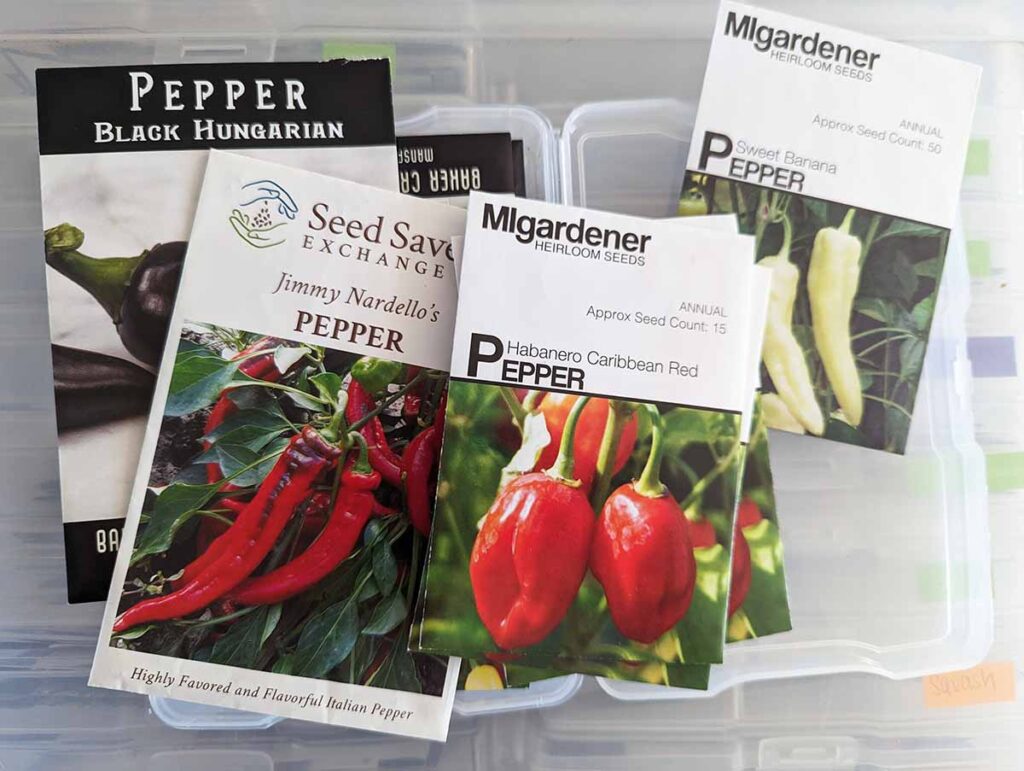
Cayenne Peppers
Cayenne peppers are long and slender, and known for their fiery heat. They are a staple in dried pepper powders and hot sauces. Cayenne plants thrive in warm weather and require good air circulation to avoid common pests like spider mites.
Ghost Peppers
Ghost peppers, one of the hottest peppers, are for those who love extreme heat. These plants need warm soil, proper care, and patience, as they take longer to mature than other varieties.
Starting Indoors for a Head Start
Starting sweet pepper seeds and hot pepper plants indoors in late winter is the best way to give your peppers a good start. This method ensures early growth and helps peppers establish a strong root system before moving them outdoors.
Use the Right Tools for Early Growth
Using seed trays, peat pots, and seedling heat mats helps maintain warm soil, which is essential for proper germination and early growth. These tools provide the ideal conditions for your seeds to sprout quickly and develop into healthy young plants.
Prevent Leggy Plants with Proper Lighting
Providing the best grow lights is crucial to prevent leggy plants. Proper lighting mimics natural elements, promoting sturdy plants with healthy stems. Be sure to check out my other blog posts for detailed tips on setting up grow lights and ensuring the ideal conditions for young pepper plants.
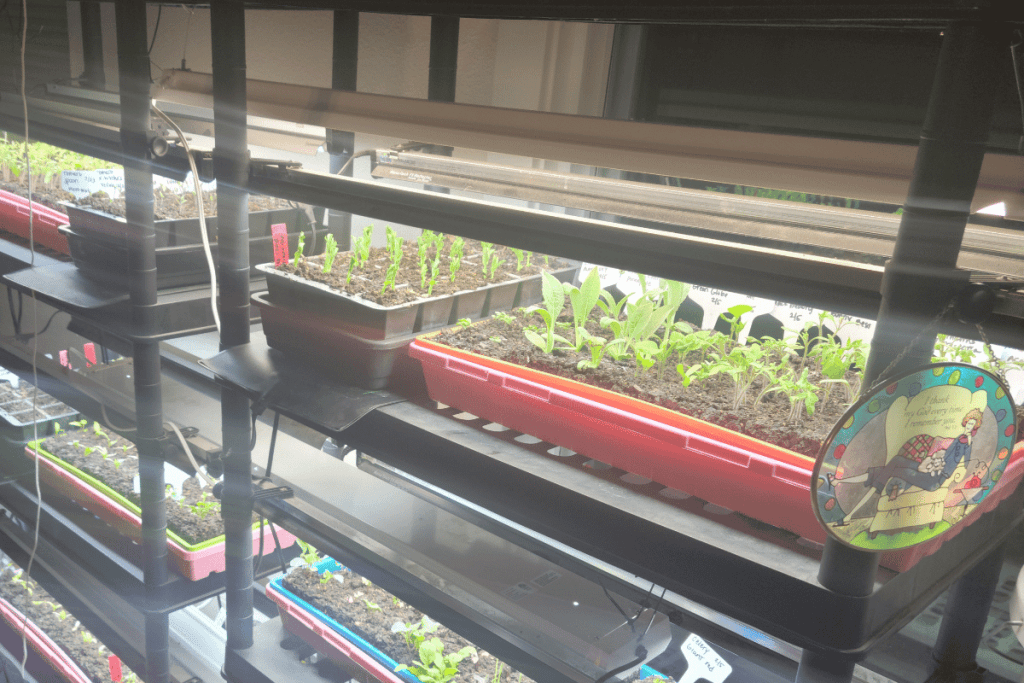
Adjust Based on Your Hardiness Zone
Your success with starting seeds indoors will also depend on your local hardiness zone and the last frost date in your area. Adjust your planting schedule and indoor setup based on these factors to ensure your peppers are ready to thrive when the growing season begins.
Creating Ideal Growing Conditions
Soil and Temperature
For healthy pepper plants, nutrient-rich soil is essential. Incorporating organic material into your soil promotes strong root systems and early growth. Well-drained soil helps prevent excess water from causing root rot, while proper soil moisture levels ensure steady plant growth.
Maintaining the right soil temperature is also critical. Peppers thrive in warm soil, so using seedling heat mats for young plants or planting in outdoor soil warmed by the sun can make a significant difference. Adding the best fertilizers, such as organic and liquid fertilizers, supports early fruits, tall plants, and robust plant growth.
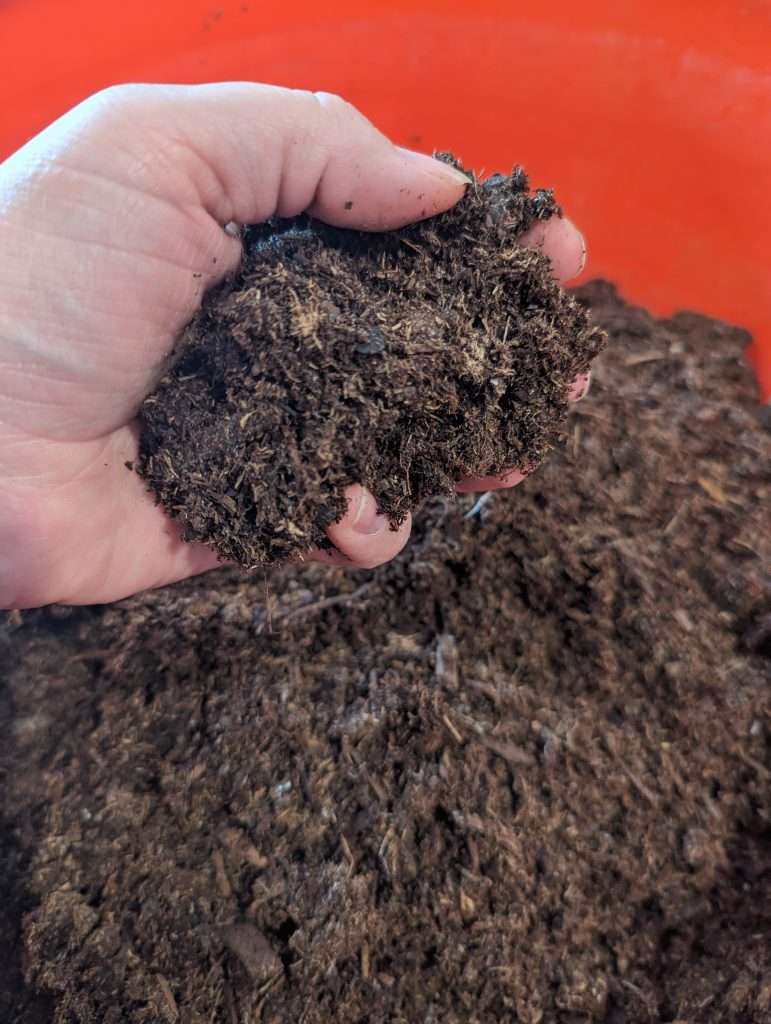
Lighting and Placement
Peppers need full sun to produce abundant and flavorful fruits. Ensure your plants receive the most sunlight possible by placing them in direct sunlight during the growing season. For indoor plants, the best grow lights provide consistent and powerful illumination to mimic natural sunlight, preventing leggy plants and encouraging healthy development.
Protect young plants from cool weather, as peppers prefer warm weather and struggle with cold temperatures. Use row covers or garden structures to shield them during chilly nights or unexpected cool climates. Proper care during the transplant phase can also prevent transplant shock, giving your peppers a good start in their new environment.
Creating the ideal growing conditions ensures your pepper plants flourish, setting the stage for a productive and successful harvest season.
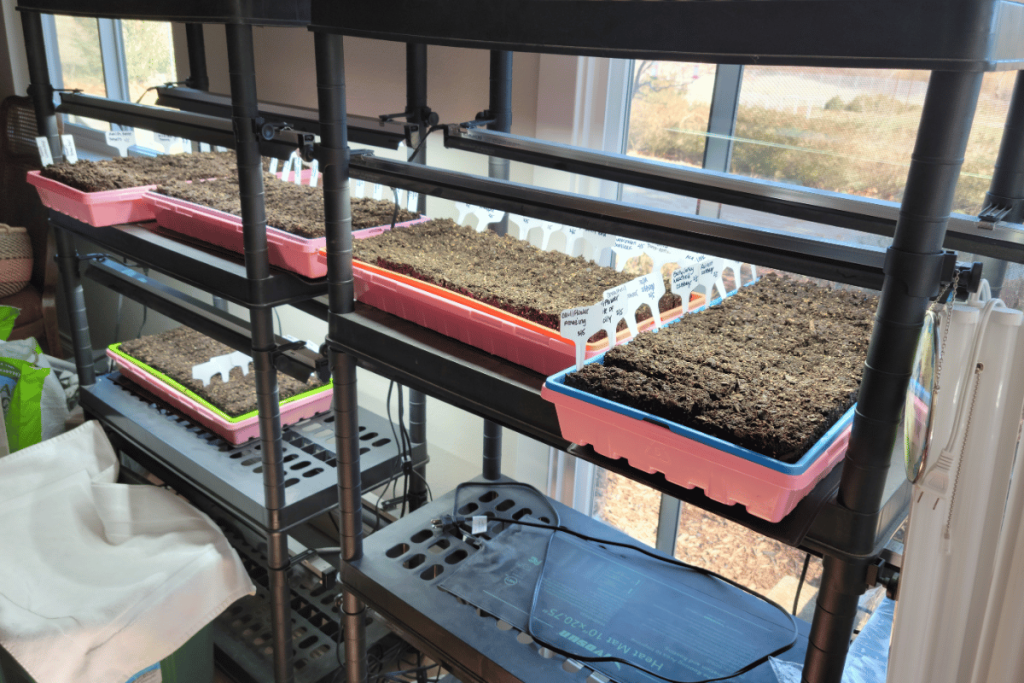
Proper Care for Healthy Growth
Watering Tips
Watering is essential for pepper seedlings and mature plants, but it’s important not to overdo it. Peppers need consistent moisture, but excess water can lead to root rot. To ensure well-drained soil, water plants deeply and regularly, allowing the soil to dry slightly between waterings. This balance helps prevent waterlogged soil while providing the hydration peppers need to thrive.
Feeding and Fertilizing
Proper nutrition plays a crucial role in supporting healthy pepper plants throughout their growing season. Just like humans, peppers need a balanced diet to thrive and produce abundant, flavorful fruits. To achieve the best results, it’s important to understand the role of key nutrients, specifically nitrogen (N), phosphorus (P), and potassium (K)—the main components of fertilizers, often referred to as NPK.
Nitrogen (N)
Nitrogen is essential for healthy plant growth, particularly during the early stages of development. It helps promote strong foliage and vigorous plant growth. However, too much nitrogen can result in an overabundance of leaves and stems, leading to leggy plants with few fruits. When growing peppers, it’s crucial to maintain a balance—too much nitrogen will result in lush, leafy plants with small or underdeveloped fruits.
Phosphorus (P)
Phosphorus is vital for the development of strong roots and flowers, making it an essential nutrient during the early growth stages and throughout the flowering and fruiting phases. It supports the production of healthy pepper fruits by promoting better flower development and ensuring that your peppers have strong root systems to support their growth. It helps the plant convert energy from sunlight into food for itself, which directly affects the size and quality of the peppers.
Potassium (K)
Potassium plays an important role in the overall health of the plant, especially in building resistance to disease and stress. It enhances the quality of fruits, improving flavor and helping with the plant’s ability to handle temperature fluctuations and drought. It also encourages strong stems and helps the plant utilize water more efficiently, leading to better overall plant health and larger, more robust pepper fruits.
Choosing the Right Fertilizer
When choosing fertilizers, look for those that provide a balanced NPK ratio, or one that’s slightly higher in phosphorus and potassium. A fertilizer with a ratio of 5-10-10 or 10-20-20 is great for peppers because it encourages strong root systems and helps support fruit production. This ratio ensures that the plants receive enough nitrogen for growth but also the necessary phosphorus and potassium to produce large, flavorful fruits.
Organic fertilizers, like compost or well-aged manure, are also excellent choices for pepper plants, providing slow-release nutrients while improving soil structure. Liquid fertilizers are another good option, especially during the growing season when peppers need frequent feeding. These fertilizers are quick to absorb and deliver nutrients directly to the plant roots, promoting fast and steady growth.
Protection from Pests and Diseases
Good air circulation around your pepper plants is essential to preventing pests and diseases like powdery mildew and spider mites. When plants are overcrowded, it creates a humid environment that encourages the growth of fungi and pests. To avoid this, make sure your pepper plants have plenty of space to allow air to flow freely between them. Check the seed packets for spacing recommendations, but in general, I plant my peppers about 6-8 inches apart. This spacing not only promotes good air circulation but also helps prevent sunscalding, ensuring the peppers receive the right amount of sunlight without being exposed to excessive heat.
Using natural elements like row covers is another great way to protect your plants from extreme heat and create a barrier against pests. Row covers shield your plants from harmful insects while still allowing sunlight and rain to reach them. This protection is especially useful during the hottest part of the day or in areas with a lot of pests, such as spider mites.
Transplanting and Outdoor Growth
Timing and Technique
When it comes to transplanting your young pepper plants, timing is key. One of the most important factors to consider is your last frost date, which varies depending on your growing zone. It’s essential to wait until after the last frost date to transplant your peppers outdoors, as they are sensitive to cool temperatures. If you’re unsure of your last frost date, check your local gardening resources or use an online tool based on your zip code. For peppers to thrive, ensure the soil temperature is consistently warm, and nighttime temperatures are no lower than 60°F. This will give your plants the best chance for healthy growth and fruit production.
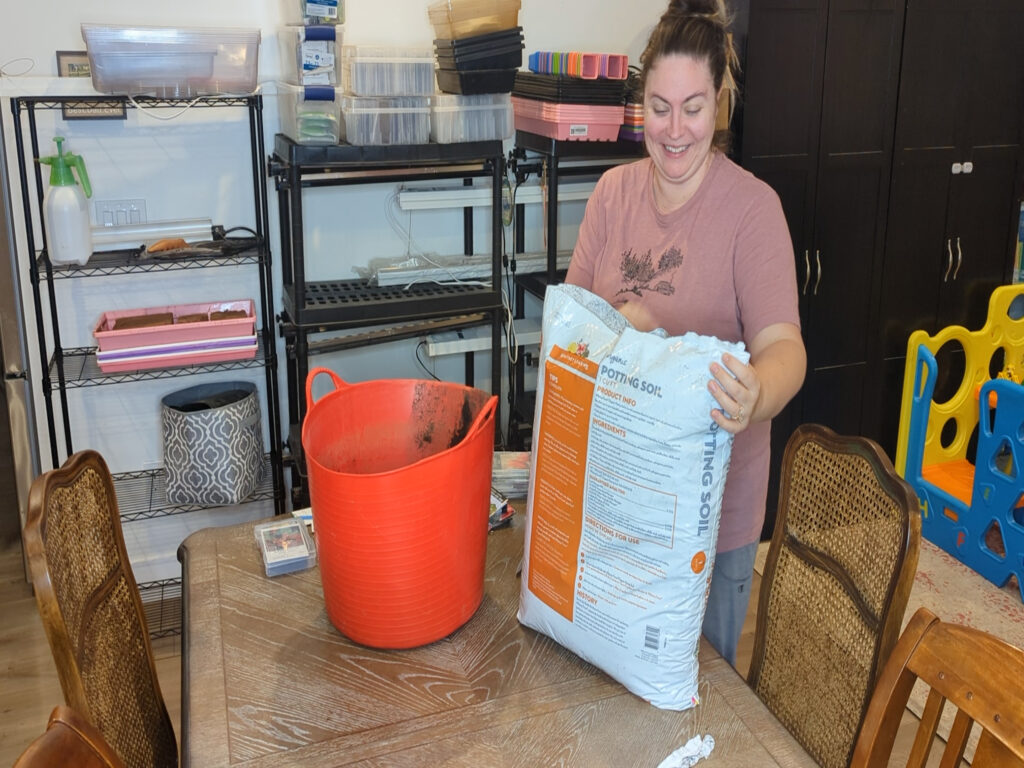
Outdoor Soil Preparation
Before transplanting your pepper plants, prepare the outdoor soil by adding plenty of organic matter. This will improve soil structure, enhance drainage, and provide essential nutrients. Peppers thrive in well-drained, nutrient-rich soil, so it’s important to take the time to amend your garden bed or containers. When planting, make sure to place the young plants at the base of the plant—this helps encourage a strong, sturdy root system and ensures that the plants remain upright as they grow taller.
Using Larger Pots and Gallon Buckets
If you’re growing peppers in cooler climates or need extra space for taller plants, using larger pots or gallon buckets can be a game-changer. Larger pots offer more room for root development and allow for better soil temperature regulation. Gallon buckets also work well for container gardening, particularly for varieties of hot peppers that tend to grow tall and require more space. If you live in a region with shorter growing seasons or unpredictable weather, containers provide flexibility and allow you to move your plants to more favorable locations when necessary. With larger pots, your pepper plants will have the space they need to thrive, ensuring a successful harvest even in less-than-ideal conditions.
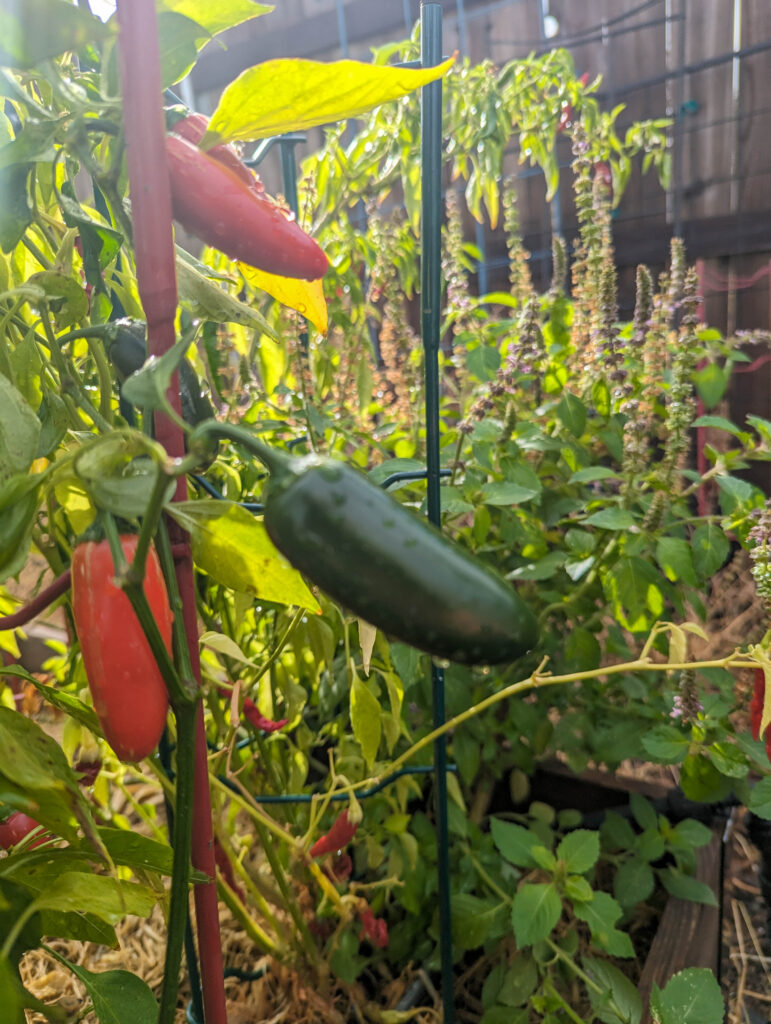
Tips for Maximizing Yield
Encouraging Early Fruits
To encourage early fruits on your pepper plants, consider pruning the main stem. This will help direct the plant’s energy into producing peppers rather than excess foliage. Also, ensuring that your plants receive direct sunlight, especially during the hottest part of the day, will help them grow stronger and produce fruits earlier in the season. For those gardening in cooler climates, using row covers can significantly extend the growing season by providing warmth and protection from cool nights. This added warmth promotes early fruiting, giving your plants a head start before the weather turns.
Ensuring Proper Care During Harvest Season
As the harvest season approaches, it’s essential to monitor soil moisture, particularly during the late summer when the weather can be hot and dry. Peppers require consistent moisture, but too much water can lead to root rot, so aim for well-drained soil and maintain an even level of moisture. When it’s time to harvest, the best way to do so is by cutting the peppers off the plant with a clean pair of scissors or pruning shears, rather than pulling them. This minimizes the risk of damaging the plant, ensuring that it continues to grow and produce more peppers.
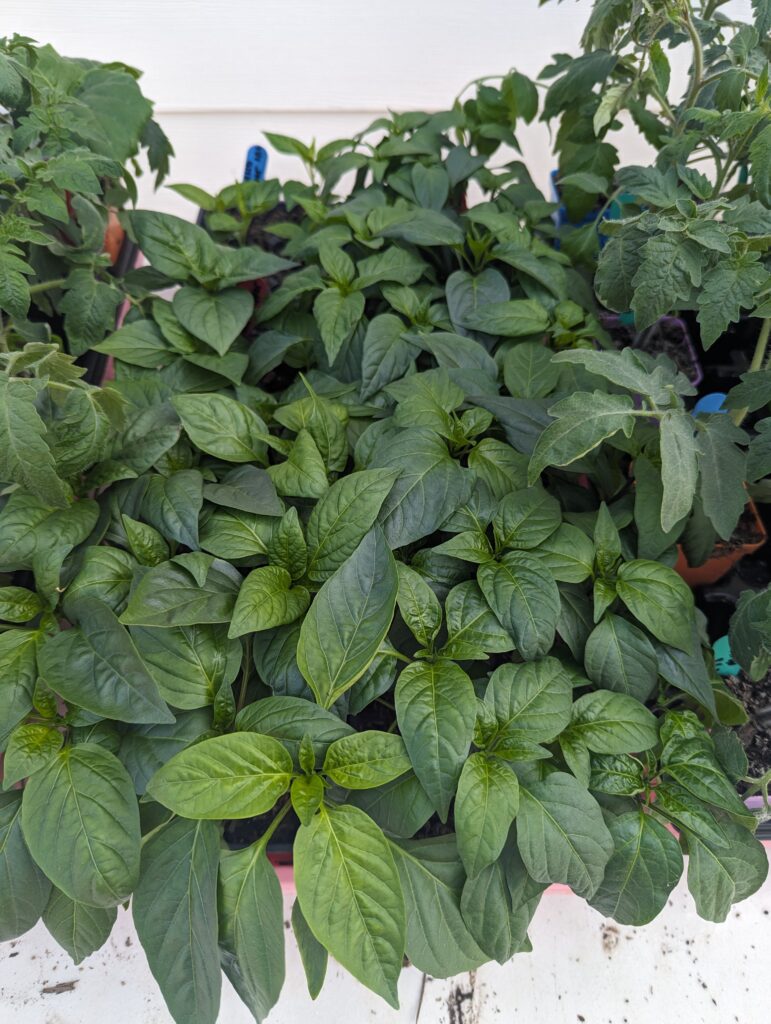
Check Out My Social Media for More Tips
For more gardening tips and inspiration, be sure to check out my social media on Instagram, TikTok, YouTube, Pinterest, and my more of this blog. I share regular updates, helpful videos, and creative ideas to help you grow your pepper plants successfully and maximize your yield. You’ll find everything from how-to guides to behind-the-scenes looks at my gardening process, giving you all the information you need to enjoy a bountiful harvest!
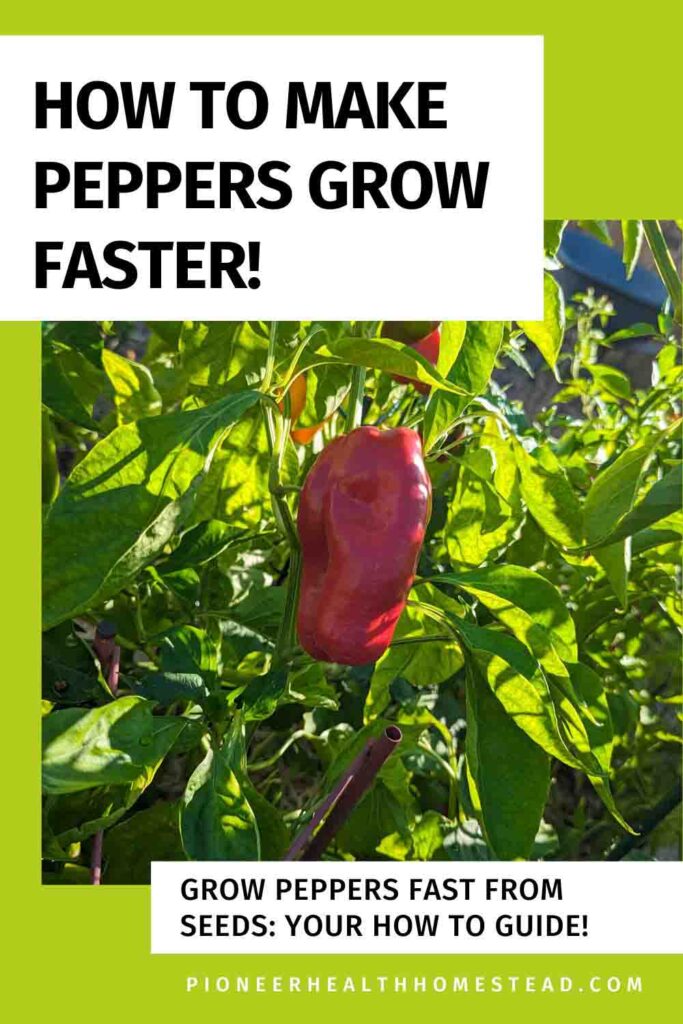
Common Challenges and Solutions
Transplant Shock
Transplant shock is a common issue when moving young pepper plants from indoors to the outdoor garden. This stress can result in slowed growth and even plant damage. To reduce transplant shock, ensure that your plants are acclimated to outdoor conditions by gradually introducing them to direct sunlight and outdoor temperatures over the course of several days, a process known as hardening off. When transplanting, make sure the soil is warm, well-drained, and rich in organic material. Organic compost and mulch can help retain moisture and protect the roots from sudden temperature changes. Additionally, using natural root stimulators like fish emulsion or compost tea can support your plants as they adjust.
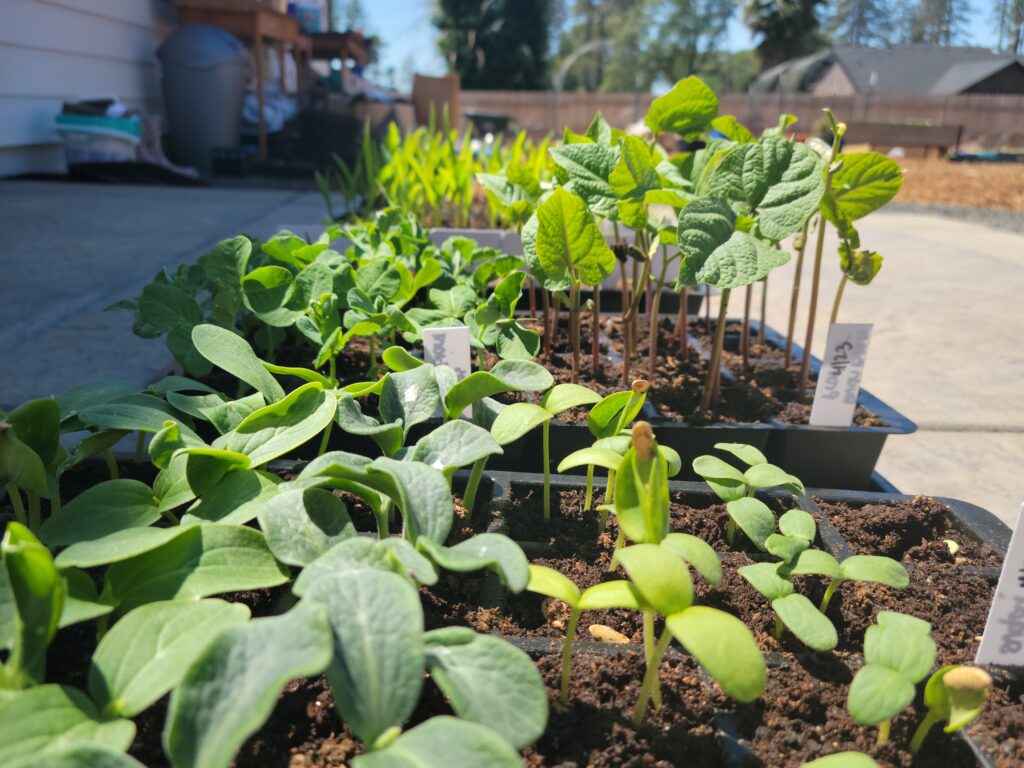
Spider Mites and Other Pests
Spider mites are a common pest that can negatively impact the health of your pepper plants. These tiny pests tend to thrive in hot, dry conditions, causing damage by feeding on the plant’s cells. The best organic solution to combat spider mites is a mixture of neem oil and water. This natural treatment can be sprayed onto your plants, helping to deter pests while promoting healthy growth. Additionally, introducing beneficial insects like ladybugs or predatory mites can help keep pest populations under control without the need for harsh chemicals. For prevention, ensure your plants have good air circulation and avoid overcrowding, which can create the ideal environment for pests.
Extreme Heat Solutions
In regions with extreme heat, your pepper plants may struggle to thrive. To help protect your peppers from the intense sun, consider using shade cloth or row covers during the hottest parts of the day. These organic coverings can block some of the sun’s rays while still allowing for air circulation. Mulching around the base of your plants with organic materials like straw or grass clippings can help keep the soil cool, conserve moisture, and prevent heat stress. Additionally, watering early in the morning can help ensure that your plants stay hydrated before the heat of the day sets in.
Growing in Cool Climates
For those gardening in cool climates or areas with inconsistent weather, it’s important to start peppers early and provide extra warmth. Using seedling heat mats when starting seeds indoors can help warm the soil and promote faster germination. Once the plants are ready for transplanting, row covers and cloches can offer protection from cool nights and early frost. If temperatures are still a concern, using larger pots or gallon buckets for container gardening allows you to move plants to warmer spots when needed, providing an extra level of protection.
Managing Leggy Plants and Over-Fertilization
Over-fertilization, especially with too much nitrogen, can lead to leggy plants that are tall but lack strong fruit production. To avoid this, use organic fertilizers like compost, fish emulsion, or well-balanced liquid fertilizers. These provide a steady supply of nutrients without overloading the plants with nitrogen. Also, be sure to space your plants properly to ensure they have enough room for proper airflow. In terms of leggy plants, ensure they receive adequate light, ideally from grow lights if grown indoors. If plants become too tall and spindly, gently prune them back to promote stronger growth and encourage more robust fruit production.
Bonus: DIY Pepper Growing Kits
If you want to make your pepper-growing experience even easier, consider assembling a DIY kit with all the essential tools and supplies. Here are some items you can purchase from a garden center, grocery store, or through my recommended Amazon Associate links:
- Seedling Heat Mats: Perfect for starting seeds indoors and ensuring warm soil for better germination.
- Organic Fertilizers: Choose balanced fertilizers like compost, fish emulsion, or organic liquid options to nurture healthy plants.
- Row Covers: Protect your peppers from pests, extreme heat, and cool weather while extending the growing season.
- Peat Pellets and Seed Trays: These provide an ideal starting environment for seedlings before transplanting.
- Gardening Gloves and Tools: Keep your hands safe while tending to your garden with comfortable gloves and essential tools.
- Compost and Mulch: Organic options to enrich your soil and maintain moisture levels during hot weather.
These items will help create the perfect environment for your peppers to thrive. Check out my affiliate links to find the best deals on these supplies for a successful pepper-growing season!
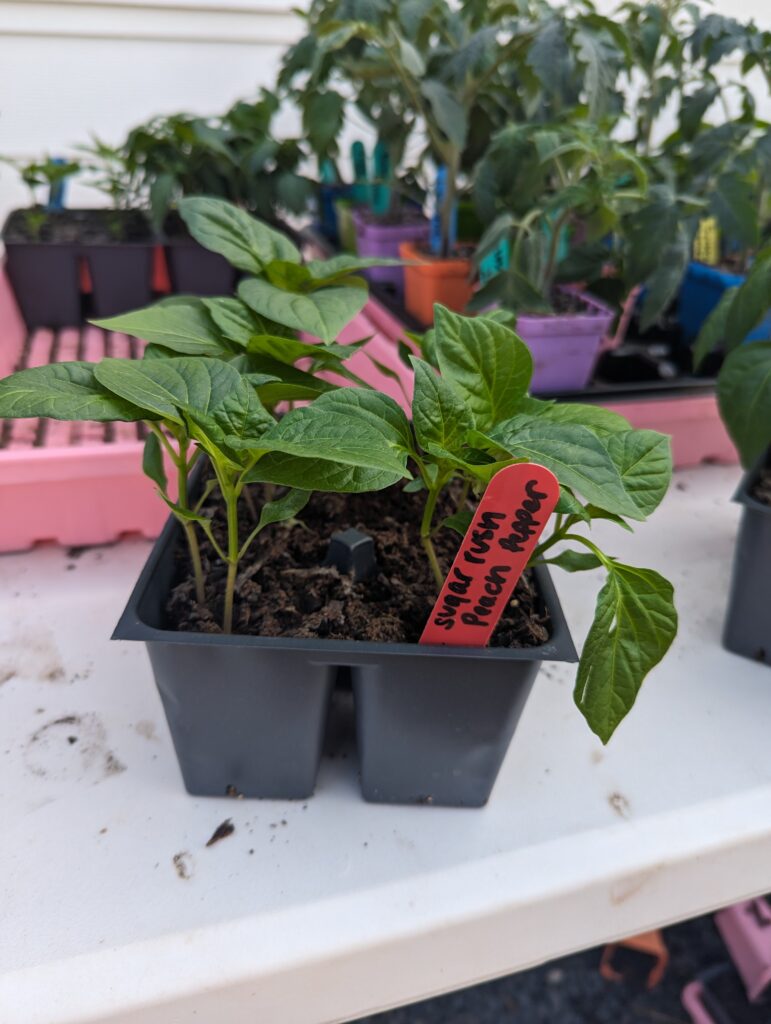
Overview of How to Make Peppers Grow Faster
Learning how to grow peppers faster can be a rewarding experience, and with the right care and attention, you can encourage faster growth and a bountiful harvest. By selecting the best pepper varieties suited to your growing zone, starting your seeds indoors for a head start, and creating ideal growing conditions with nutrient-rich soil and proper lighting, you’ll set the stage for success.
Proper watering, feeding with balanced fertilizers, and protecting your plants from pests and diseases are essential for healthy, vigorous growth. And, as the season progresses, make sure to transplant your seedlings at the right time and care for them with consistent attention to temperature and soil conditions. With a few simple strategies, like using row covers and pruning your plants, you can maximize yields and enjoy a harvest of flavorful peppers.
For even more tips and guidance, check out my blog and follow me on social media for inspiration and updates. Whether you’re growing sweet bell peppers, hot jalapeños, or a variety of spicy peppers, these steps will help you grow peppers faster and more efficiently, no matter your growing conditions. Happy gardening!
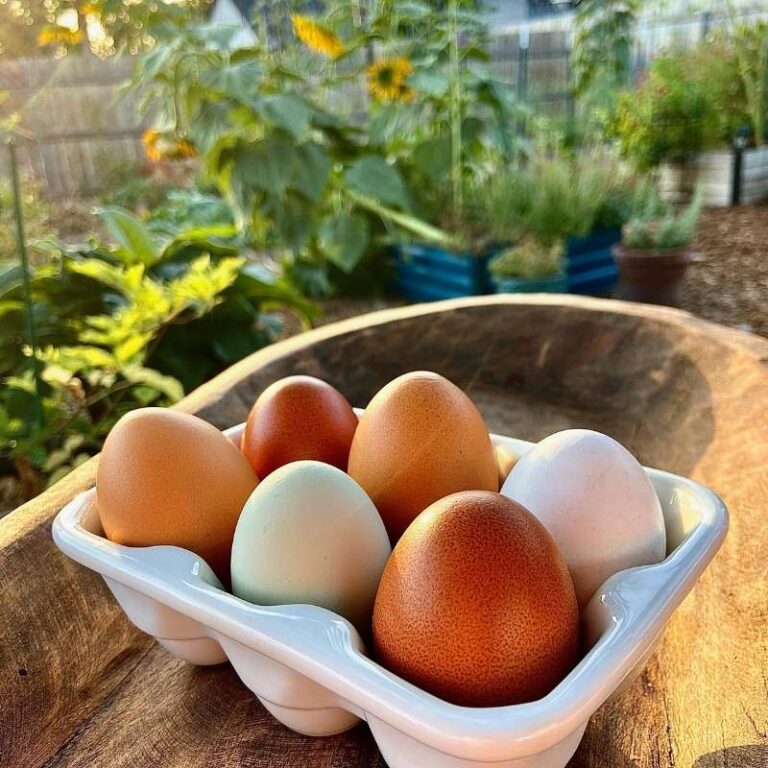
Homesteading in California: How to Start at Any Stage
Sharing is caring! Facebook Pinterest X Homesteading in California: How to Start at Any Stage How Homesteading in California is Possible Homesteading in California is a journey that looks different for everyone, depending on where you live in this vast and diverse state. From the deserts dotted with Joshua trees in the south, to the…
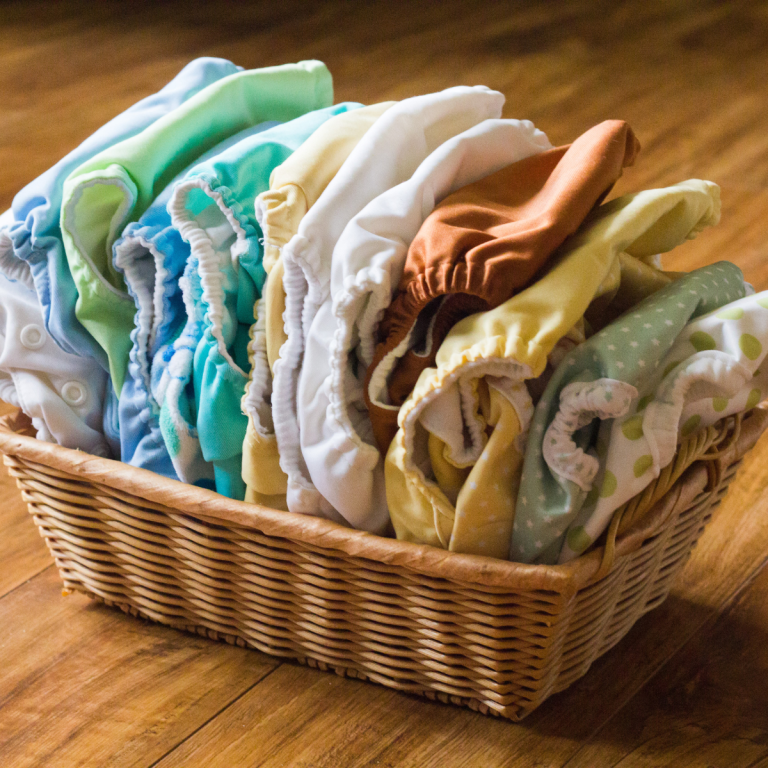
The Different Types of Cloth Diapers: Ultimate Guide
The Different Types of Cloth Diapers: Ultimate Guide The different types of cloth diapers offer a sustainable and eco-friendly alternative to disposable diapers for your baby. As a mom of five and a Registered Nurse, I’ve seen the many benefits of reusable cloth diapers firsthand. This guide will help you understand the major types of…
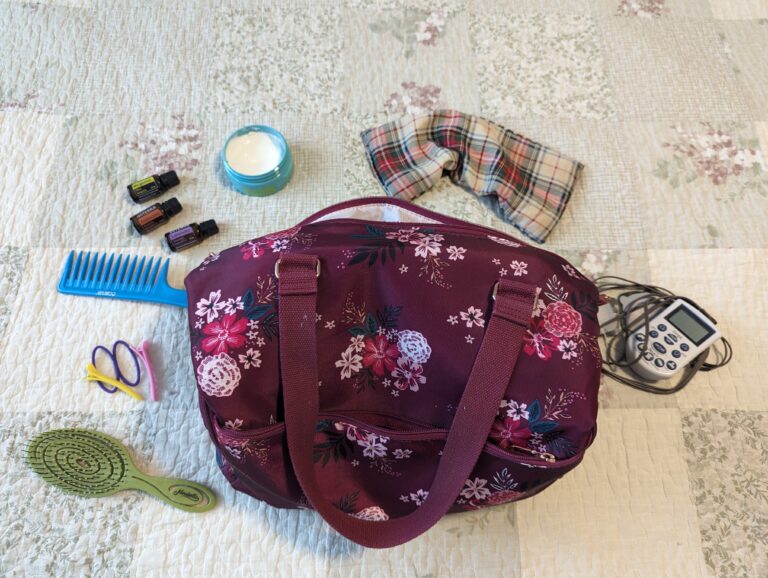
The Best Doula Bag Essentials Kit for Birth and Postpartum
The Best Doula Bag Essentials Kit for Birth and Postpartum The Best Doula Bag Essentials Kit for Birth and Postpartum A well-stocked doula bag is essential for supporting women during birth and postpartum. As a Registered Nurse, mother of five, and former Navy Hospital Corpsman, I’ve experienced the birthing world from many angles. I’ve worked…
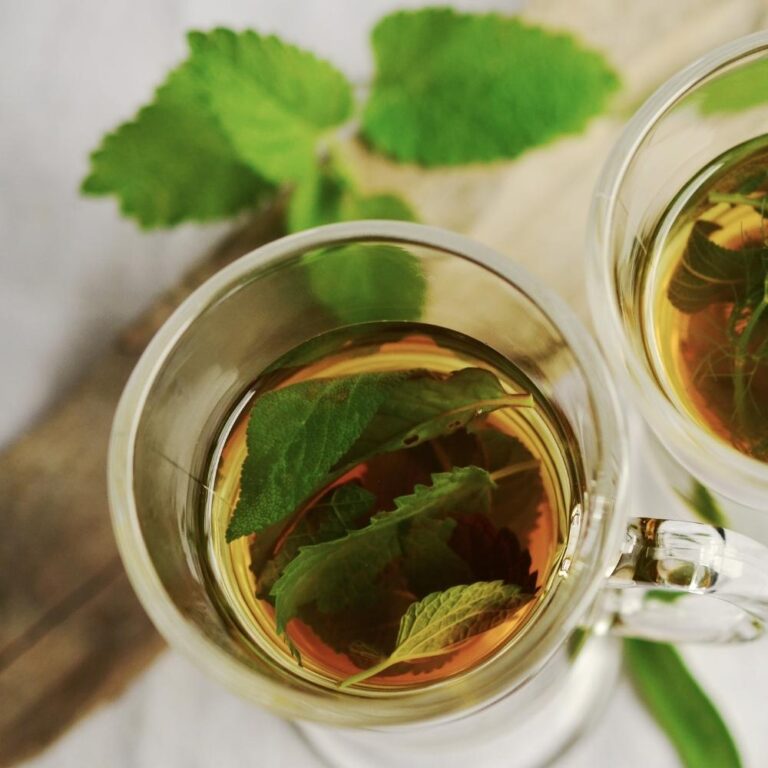
The Best Herbal Tea for Sinus Infection: Natural Treatments
The Best Herbal Tea for Sinus Infection: Natural Treatments Best Herbal Tea for Sinus Infection: Natural Remedies for Sinus Relief The best herbal tea for sinus infection can help relieve common sinus infection symptoms like congestion, pressure, and headaches. Sinus infections, including acute and chronic sinusitis, cause discomfort in the sinus cavities. Symptoms often include…
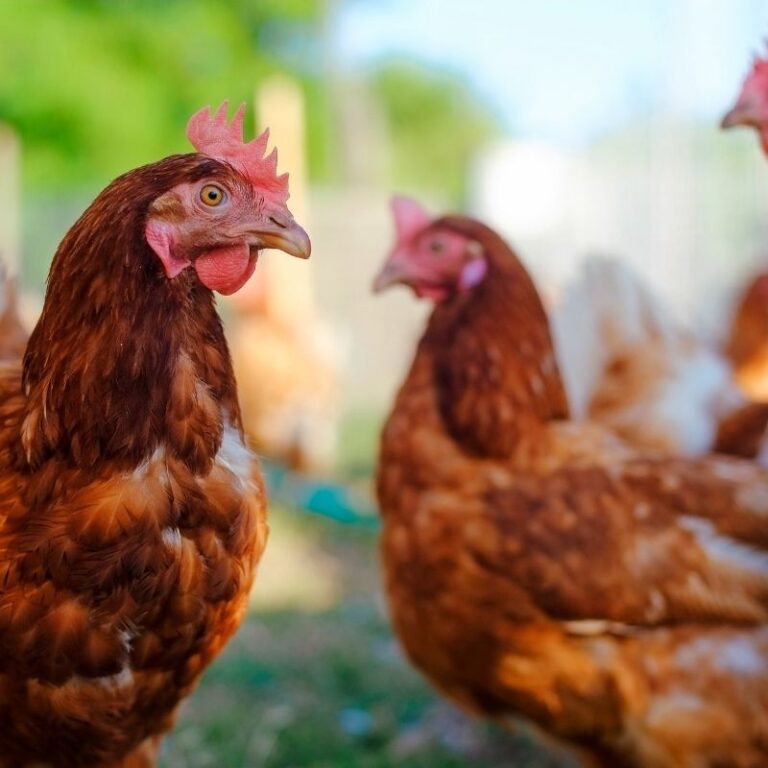
The Best Time to Get Chickens: Guide for Baby Chicks
The Best Time to Get Chickens: Guide for Baby Chicks Many first-time chicken owners wonder when the best time to get chickens is. Keeping backyard chickens is an incredibly rewarding experience, offering a steady supply of fresh eggs, a fun hobby, and even a way to teach children about responsibility. However, choosing the best time…
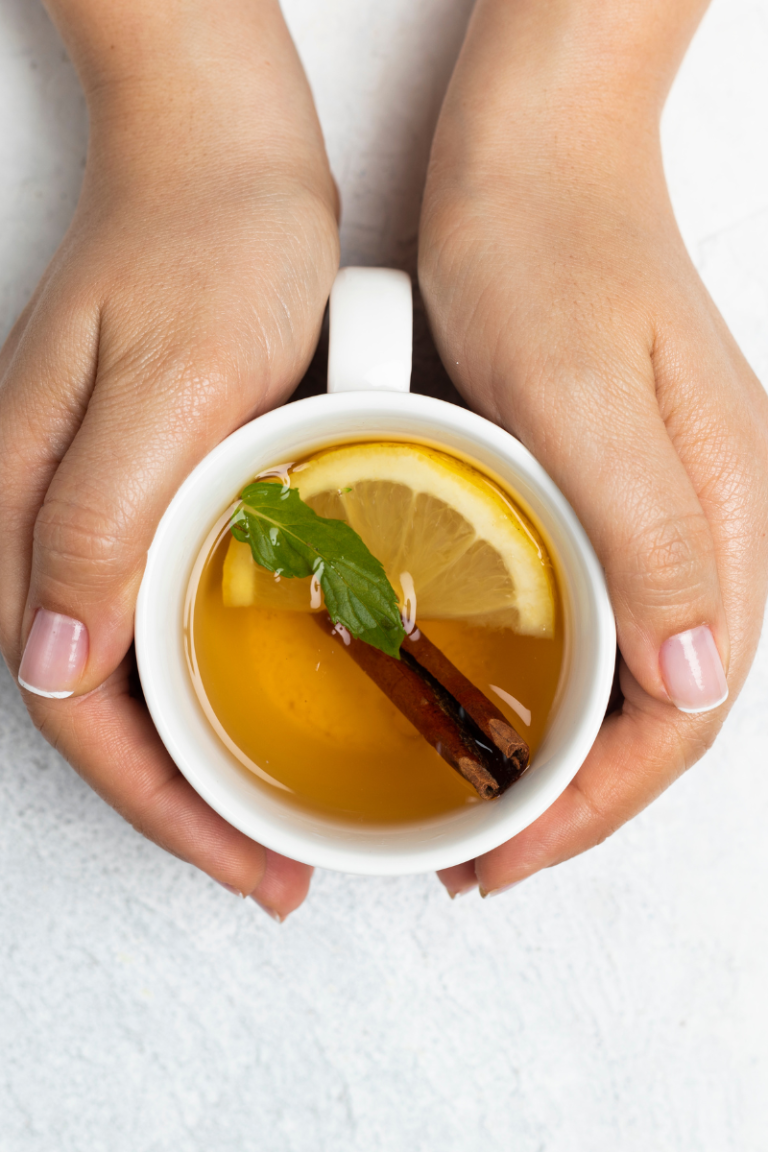
The Best Temp for Herbal Tea: Guide for Optimal Brewing
The Best Temp for Herbal Tea: Guide for Optimal Brewing What is the Best Temp for Herbal Tea? What You’ll Learn in This Guide The best temp for herbal tea is key to unlocking the full flavors and health benefits of your brew. In this guide, tea lovers will discover the ideal brewing temperatures for…

